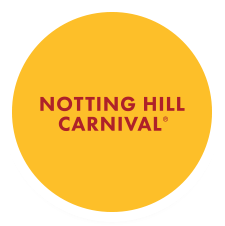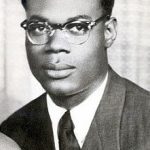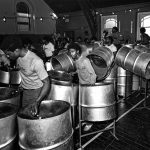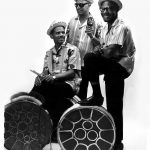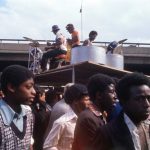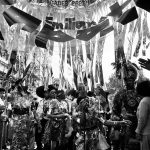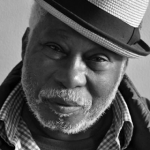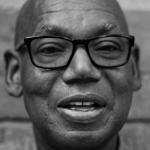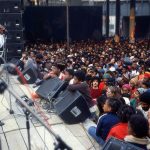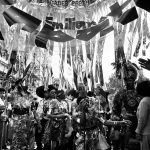History
History
"If there weren't race riots in Notting Hill I don't believe that we would have had the Notting Hill Carnival. If it wasn't for the murder of Kelso Cochrane, Carnival wouldn't have happened."
The late Political Activist and Broadcaster, Darcus Howe
Kelso Cochrane was a 32 year old, Antiguan born carpenter, and aspiring lawyer, living in Notting Hill at a time when racial tensions were high. He died after a racially motivated attack on Southam Street (off Golborne Road) Notting Hill on May 17th 1959 (today a blue plaque marks the spot). His murder had a huge impact on race relations. Reportedly, there were over 1,200 attendees at his funeral. Many of whom came to demonstrate solidarity and a show of defiance against racism locally.
Activism was stepped up to Whitehall when it was felt the investigation into the murder was complacent, and allegations of a police cover up began to circulate (the case is unsolved to date). Rab Butler, the then Home Secretary, made an appeal for witnesses in Parliament and went on to launch a public inquiry into race relations. Much activity to ease racial tension within the Notting Hill area preceded Cochrane's murder, leading to a children's street fayre organised my local resident and community activist, Rhaune Laslett. Laslett is reported to have said of her community and her event "We felt that although West Indians, Africans, Irish and many others nationalities all live in a very congested area, there is very little communication between us. If we can infect them with a desire to participate, then this can only have good results." It was this small community children’s street fayre back in the mid 60s that would morph into what we now know as Notting Hill Carnival.
Claudia Jones, a Trinidadian human rights activist based in London, put on a BBC broadcasted indoor ‘Caribbean Carnival’ at St Pancras Town Hall back in 1959. She is widely credited with planting the seeds for Carnival in the UK by doing so.
An appetite for the indoor Caribbean carnival was fed by Trinidadian husband and wife booking agents Edric and Pearl Connor who along with many partners including the West Indian Gazette (which was founded by Claudia Jones) began promoting indoor events in halls dotted around 1960s London.
Rhaune invited well-known pan player Russell Henderson, who was accompanied by his pan band members Sterling Betancourt, Vernon “Fellows” Williams, Fitzroy Coleman and Ralph Cherry.
In 1966 the first outdoor festival took place in the streets of Notting Hill. A local resident and social worker Rhaune Laslett – a Londoner of Native American and Russian descent – organised an event for local children.
As an established community activist with a history of addressing and easing inter-cultural tension in the area since the violent race-riots of the 1950s, she set out to include the local West Indian residents in her event.
The band were already popular amongst the Caribbean community, having been regulars at the indoor carnival events. As Laslett had intended, many local Caribbean residents attended, and her vision of an outdoor multi-cultural community celebration was a huge success: the first event saw Henderson's steelband weave its way through Portobello Road as a trail of locals spontaneously gathered and danced in the street to the sound of pan. the first Notting Hill carnival was officially born.
Today’s Notting Hill Carnival
Notting Hill Carnival is still proudly a community-led event, its ever-increasing popularity over the last 5 decades has seen it become the wonderfully diverse and vibrant event it is today.
With over a million visitors expected over the August Bank Holiday, London’s NHC is second only to Brazil's Rio Carnival in size, and is now one of the globe's largest annual arts events. NHC is considered to be the largest street event in Europe.
Whilst Notting Hill Carnival is rooted in Caribbean culture, with its Windrush-generation influence remaining strongly evident, it is at the same time characteristically ‘London’ – today's modern London.
Uniquely NHC is the only full-scale carnival in the world to feature multiple static sound systems – a feature introduced in 1973 by the then NHC organiser Leslie Palmer MBE
There are live performances too. the first stages were organised by Wilf Walker in 1979, chiefly featuring reggae and punk bands. Wilf's early live stages featured performances from emerging talents Aswad and Eddie Grant, who both went on to become two of the UK’s biggest musical exports.
In the 90s, hip hop legends like Jay Z, Lil’ Kim and Busta Rhymes all performed on an NHC live stage, more recently the likes of Stormzy, Wiley, Craig David, Giggs, Major Lazer, Mr Eazi and Stefflon Don.
2018 saw the launch of ‘the Wilf Walker Community Stage’ in Hormiman’s pleasant park. a stage dedicated to giving a platform to emerging talent predominantly from the local community.
NHC live stages and ‘trucks’ (floats) also host performances from British-based calypso artists like Alexander D Great and De Admiral, as well as internationally known soca artists like Bunji Garlin and Machel Montano.
